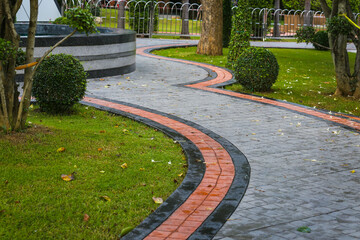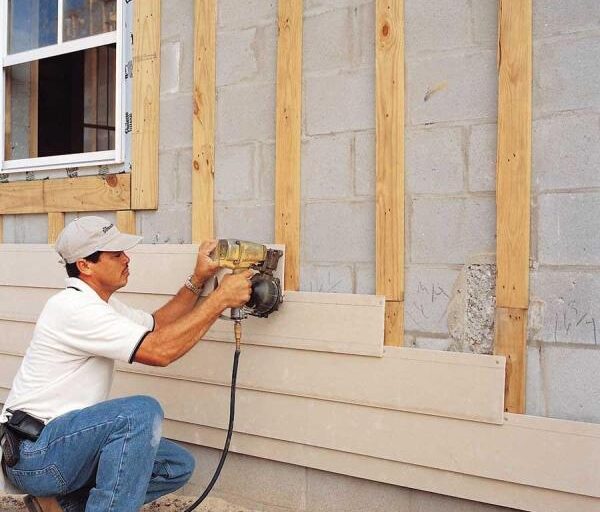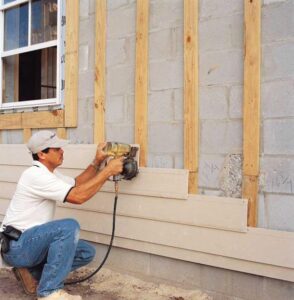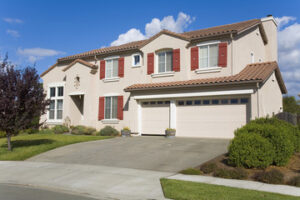Stamped Concrete Colorado Springs is a great option for homeowners who want to add a unique, high-end look to their outdoor spaces. It is a durable material with a long lifespan and is less expensive than pavers or asphalt.
It is also easy to maintain, as it only requires regular sweeping and periodic rinsing. However, like all concrete, it can crack.
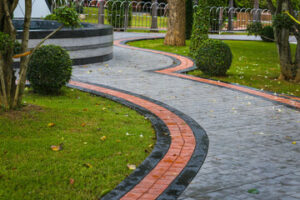
If you’re shopping for a new patio, driveway or walkway surface, you may be surprised to find how reasonably priced a stamped concrete overlay can be. In fact, it compares very favorably to the costs of other types of hardscape materials like pavers and natural stone.
In addition, poured concrete is an economical choice because it uses the existing foundation as its base. With that said, the design and layout of your stamped concrete is a significant factor in its final cost. Whether you opt for a simple single-color stamp pattern or a two-tone design with a border, expect to pay between $10 and $15 per square foot.
A concrete slab that has been properly installed is durable and requires little maintenance. However, the surface must be sealed to prevent water absorption and stains. The sealant options vary in price, but the most common are acrylics and water-based elastomeric coatings. Water-based elastomerics are less expensive and provide a transparent finish, while acrylics add more shine and offer the best color retention. Regardless of what you choose, the coating will need to be reapplied every one to two years.
As with any type of pavement, stamped concrete can crack over time. Nevertheless, most cracks are difficult to see and can be easily repaired with minimal effort. In general, stamped concrete is more resistant to cracking than paved stones, such as pavers.
It is possible to achieve a more rustic look with stamped concrete, but this will increase the amount of maintenance and repair work required. For example, a rough surface will require more frequent washing to prevent dirt build-up. In some cases, the rougher texture can cause the stamped concrete to wear down faster than a smooth surface.
The durability of a stamped concrete surface is dependent on how well it is installed and the weather conditions in your area. Generally, a quality contractor will take all the necessary steps to ensure that the concrete is strong and stable. However, even if the installation is done correctly, extreme temperatures can still cause the concrete to shrink or expand, which can lead to cracks.
Concrete is a strong material that can hold up to heavy foot traffic, but it can also crack over time. When this happens, a local concrete contractor can repair the cracks by applying a special epoxy to the surface. This will keep moisture out of the cracks, preventing them from expanding and growing larger.
Stamped concrete can last up to 30 years with minimal maintenance. It’s a great alternative to other hardscaping materials, such as pavers, which can break down after a few years. Additionally, stamped concrete is more affordable than other materials that mimic the look of natural stone.
When choosing a color for your stamped concrete, it’s important to consider the shade and sun exposure of your outdoor space. Sunlight can bleach the color of the concrete, causing it to fade over time. A professional can help you choose a color that will stand up to the elements and last for a long time.
Once the concrete is poured, it needs to set before you can apply the stamping and texturing. Make sure to follow the instructions on your Tru Impression Liquid Release and ensure that it is spread evenly across the entire application surface. After the concrete is dry, you can add the desired texture to the concrete by using our textured skins. Once the concrete is textured, you can use our Tru Tique Antique Wash to accent and highlight the natural details of your concrete pattern.
To maintain the beauty of your stamped concrete, it’s a good idea to clean it on a regular basis. A broom, leaf blower, or garden hose with a high-pressure nozzle attachment can be used to remove dirt and debris from the surface. Be careful when removing debris to avoid scratching the concrete surface.
Another way to protect your stamped concrete is to seal it on a regular basis. A professional can recommend the best type of sealer for your concrete, and it’s important to reapply the sealant every 2-3 years. This will prevent stains and keep the surface looking new.
Whether you have a concrete driveway, sidewalk, patio or pool deck, stamped concrete can add a unique look and style that enhances your home. However, like all other hardscaping materials, it requires a certain level of maintenance to stay looking its best. This includes cleaning, resealing, and patching, depending on the needs of your concrete.
The most important part of maintaining a stamped concrete surface is applying a concrete sealer. This helps prevent stains, reduces water penetration and promotes durability. While it’s possible to reseal stamped concrete on your own, hiring a professional will usually yield better results and ensure that the sealer is applied evenly.
While a high-quality sealer will help your concrete last longer, it’s not impervious to damage. Cracks are a common problem with stamped concrete, but they can be repaired with the right tools. It’s best to hire a professional for repairs, especially when it comes to larger areas such as driveways and patios. A professional will also be able to identify any potential problems and take action before they become serious.
A well-maintained stamped concrete surface can improve your curb appeal and increase the value of your home. Regular cleaning, resealing and repairs will ensure that your concrete looks great for years to come.
Stamped concrete is a popular choice for walkways, patios and driveways because of its beauty, durability and versatility. It can be designed in a variety of patterns and colors, and it’s easy to maintain.
When choosing a stamped concrete contractor, make sure they have experience with the type of project you need. If you’re installing a driveway, for example, you’ll need a contractor who understands the proper installation techniques for concrete slabs. A good contractor will also be able to recommend the best staining or coloring options for your concrete.
Although it’s tempting to spruce up old concrete with flowers or mulch, these methods aren’t as effective as resealing and recoloring your concrete. A new coat of concrete sealer can restore your concrete’s shine and protect it from weather and deterioration. Resealing your stamped concrete every few years is the best way to keep it looking its best.
Are you tired of looking at your old, gray concrete walkway or driveway? Perhaps it’s cracked, covered in dandelions or simply drab. If so, it’s time to spruce things up! A new concrete walkway or patio with a stamped finish can add an immediate sense of curb appeal to your home. Plus, it may boost your resale value as well.
The beauty of stamped concrete is its ability to mimic the look of other building materials such as tile, stone, slate, brick and wood. This flexibility allows you to easily find a pattern and color that suits your outdoor space and complements your home’s architectural style.
Stamped concrete is also more affordable than pavers, which can add up quickly. Moreover, it is easier and less labor-intensive to install than individual pavers. Additionally, stamped concrete is long-lasting and requires little maintenance aside from sweeping and the occasional application of deicers.
When it comes to resale value, curb appeal is one of the top factors that potential buyers consider when viewing a home. If your walkways and patios are drab, they can detract from the value of your property. However, a newly installed, well-maintained stamped concrete walkway or patio can give your home an instant sense of curb appeal and boost its value.
Aside from adding an aesthetic element to your home, a stamped concrete patio or walkway can also help you reduce your carbon footprint. Since it’s made of concrete, a resource-efficient material, it’s an eco-friendly alternative to other outdoor paving materials.
Before you hire a contractor to install your stamped concrete, ask them to provide you with samples of their previous work so you can compare the quality and appearance. It’s important to hire a skilled concrete craftsman to ensure your project is done correctly and the results are just what you want. A good concrete worker will be able to lay the concrete properly, create even and consistent patterns, and use the right color pigments to achieve the best results. They will also be able to recommend the best type of sealer for your new patio or driveway.
